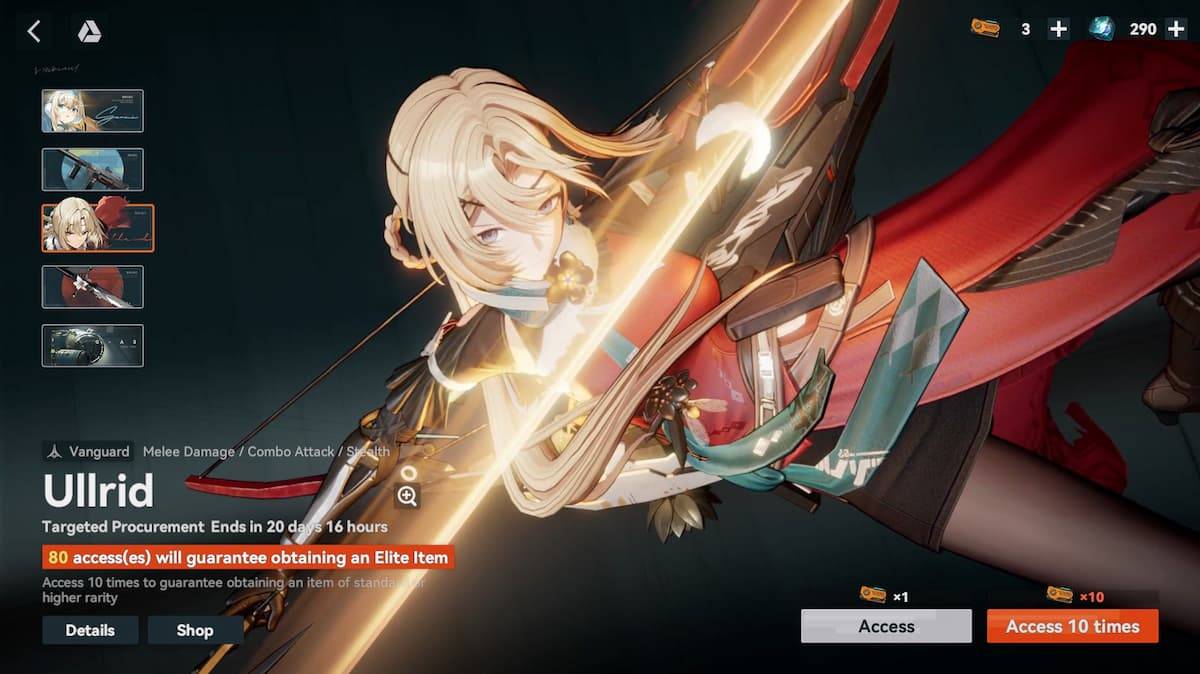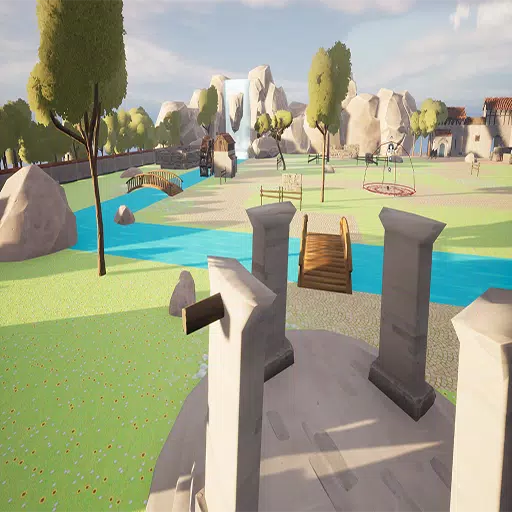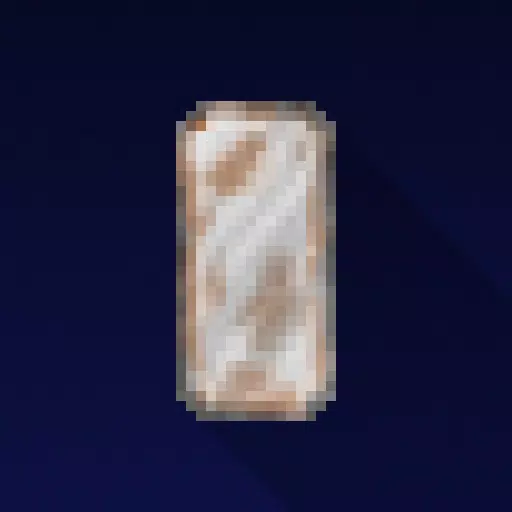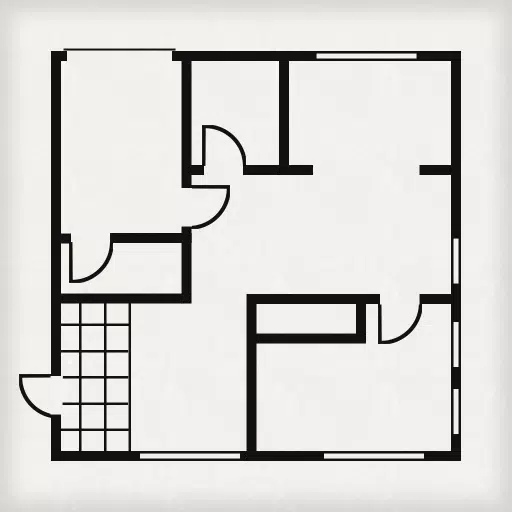AMD Radeon RX 9070 XT: Performance Review
For the last few generations, AMD has been striving to challenge Nvidia at the high-end segment. However, with the introduction of the AMD Radeon RX 9070 XT, Team Red has strategically shifted its focus away from the ultra-high-end, leaving that arena to the RTX 5090, and instead concentrated on delivering the best graphics card for the majority of gamers—a goal it has successfully met.
The AMD Radeon RX 9070 XT, priced at $599, stands toe-to-toe with the $749 GeForce RTX 5070 Ti, positioning it as one of the top GPUs available today. AMD enhances its value proposition with the introduction of FSR 4, marking the first time AI upscaling is available on an AMD graphics card. This feature makes the RX 9070 XT an exceptional choice for 4K gaming, particularly for those unwilling to splurge nearly $2,000 on the RTX 5090.
Purchasing Guide
----------------The AMD Radeon RX 9070 XT will be available starting March 6, with a starting price of $599. Be aware that prices may vary, as third-party cards could be priced higher. Aim to purchase one for under $699 for the best value.
AMD Radeon RX 9070 XT – Photos
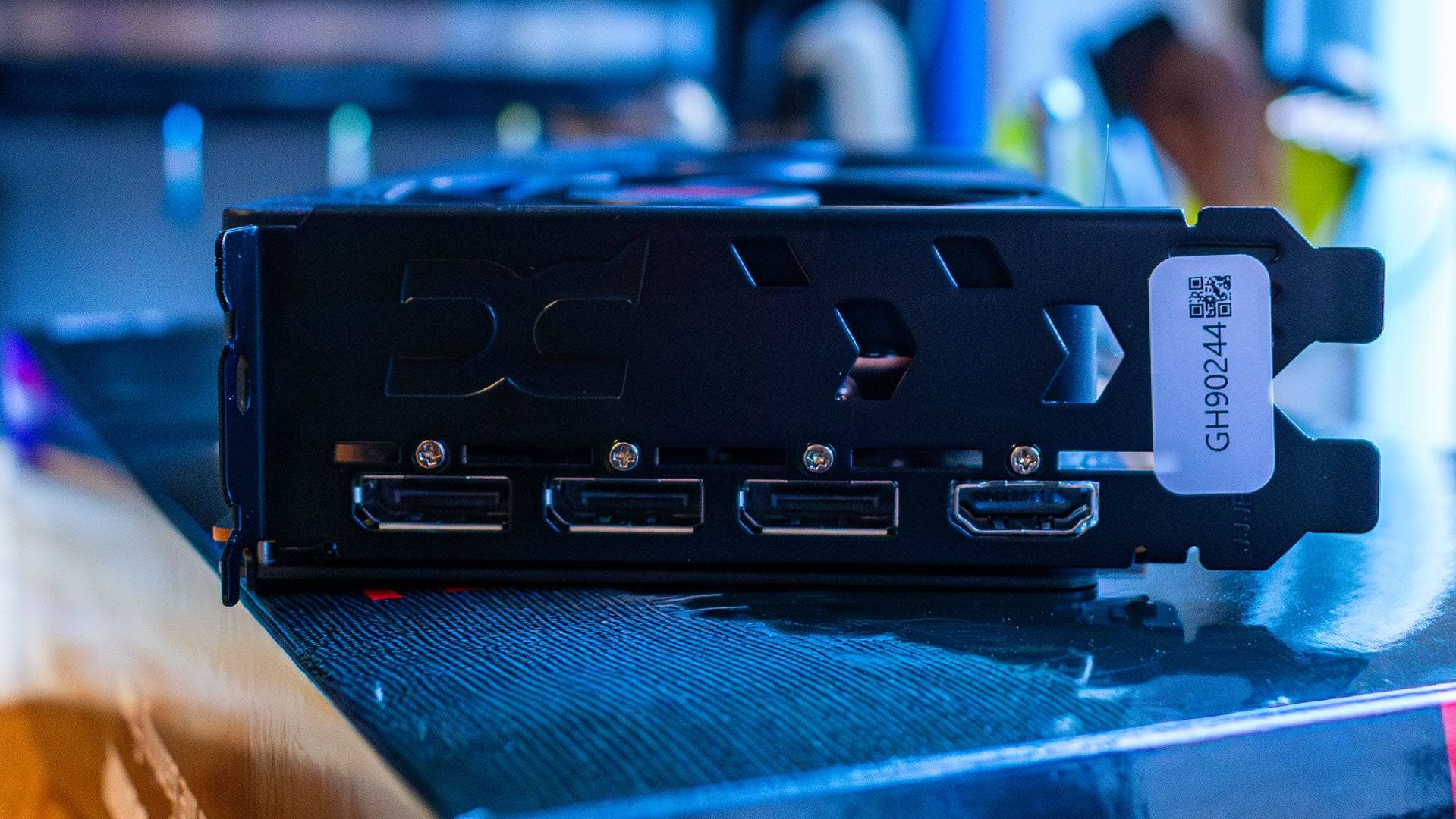
 4 Images
4 Images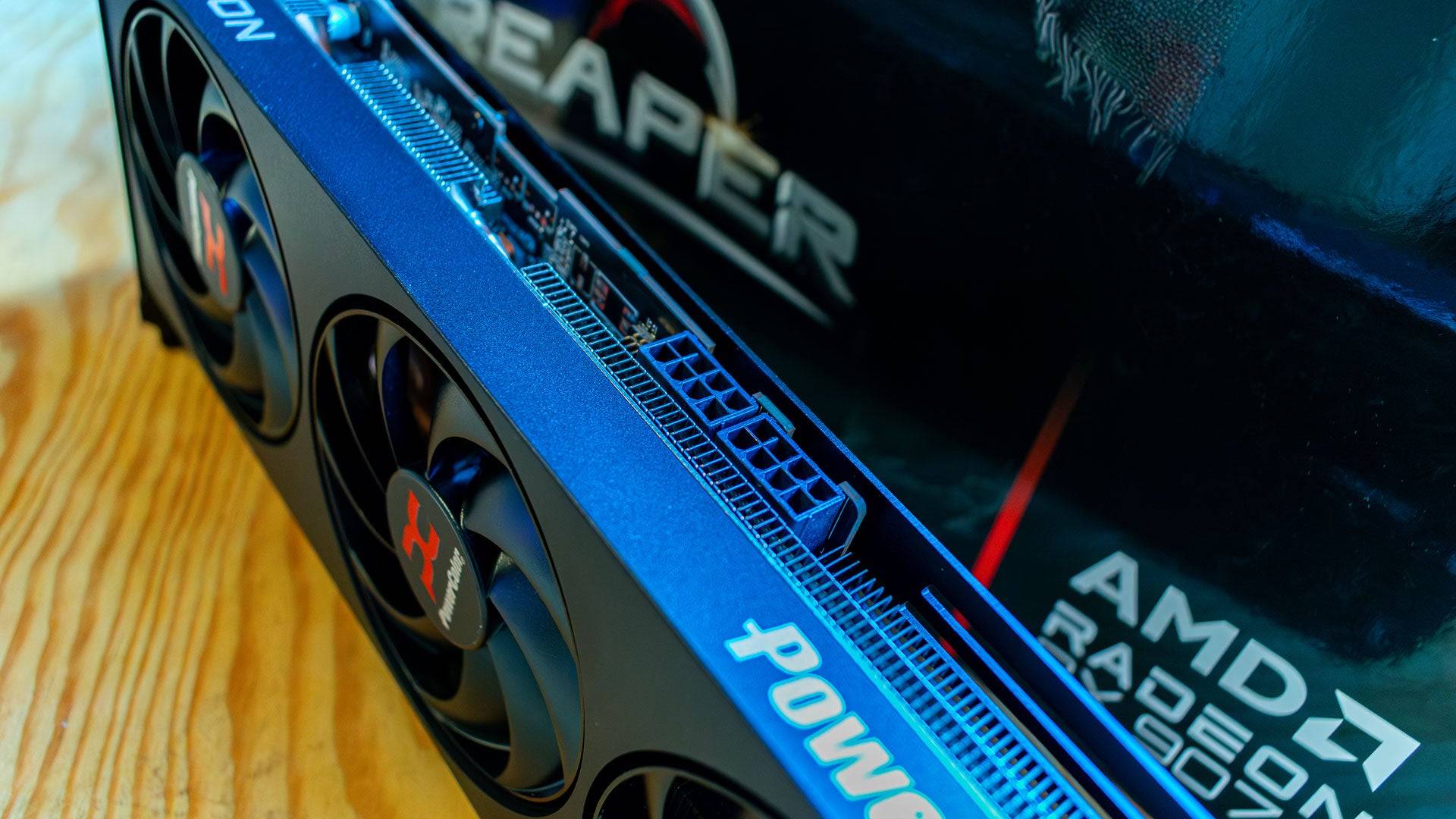
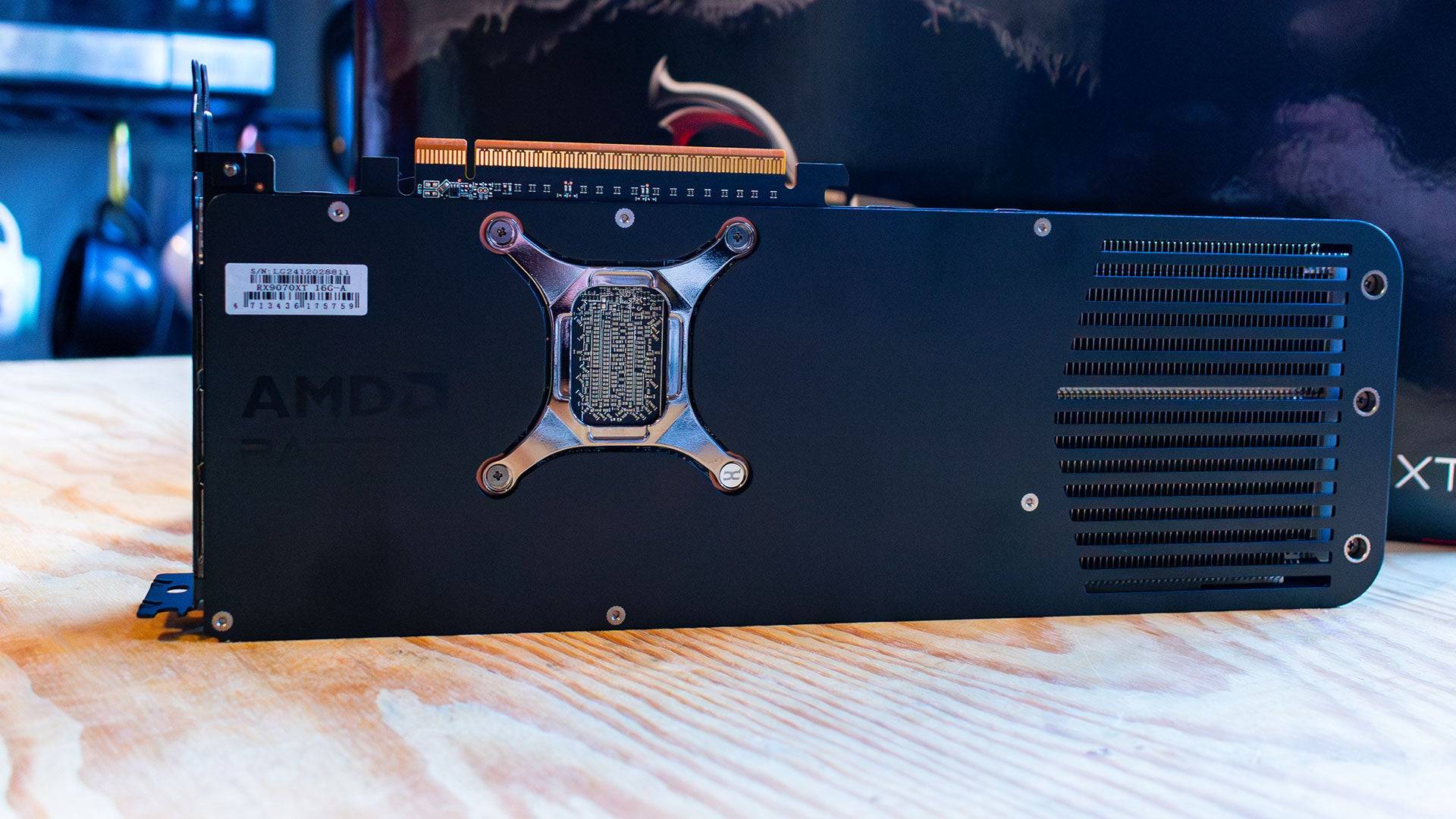
Specs and Features
------------------Built on the RDNA 4 architecture, the AMD Radeon RX 9070 XT showcases enhancements in its shader cores, but the highlight is the new RT and AI Accelerators. The AI Accelerators are pivotal for FidelityFX Super Resolution 4 (FSR 4), marking AMD's entry into AI upscaling. While FSR 4 may not boost framerates over FSR 3.1, it significantly enhances image quality. For those prioritizing performance, the Adrenalin software allows users to disable FSR 4 easily.
AMD's advancements in shader core efficiency mean the Radeon RX 9070 XT, with 64 Compute Units and 4,096 Streaming Multiprocessors, achieves a notable performance leap over its predecessor, the RX 7900 XT, which had 84 Compute Units. Additionally, the RX 9070 XT includes 64 ray accelerators and 128 AI accelerators.
However, the RX 9070 XT comes with a reduction in memory, featuring 16GB of GDDR6 on a 256-bit bus, compared to the RX 7900 XT's 20GB on a 320-bit bus, impacting both capacity and bandwidth. Despite this, it remains sufficient for most 4K gaming needs.
The RX 9070 XT's power consumption is slightly higher at 304W compared to the RX 7900 XT's 300W, though actual usage showed the RX 7900 XT consuming more power. Cooling is manageable with a standard power budget, and the absence of a reference design means reliance on third-party manufacturers. The Powercolor Radeon RX 9070 XT Reaper, with its compact triple-fan design, maintained temperatures at 72°C during testing.
The card uses standard power connectors, requiring two 8-pin PCI-E connectors, and is recommended for use with a 700W power supply. It features three DisplayPort 2.1a and one HDMI 2.1b port, though the addition of a USB-C port would enhance its versatility.

FSR 4
-----For years, AMD has sought an AI upscaling solution to rival DLSS. The Radeon RX 9070 XT introduces FSR 4, which uses AI accelerators to upscale lower-resolution images to native resolution, improving upon the temporal upscaling of FSR 3. While FSR 4 enhances image quality, it does so at the cost of a slight performance hit.
In Call of Duty: Black Ops 6 at 4K Extreme settings, the RX 9070 XT achieved 134 fps with FSR 3.1, dropping to 121 fps with FSR 4—a 10% performance decrease but with better image quality. Similarly, in Monster Hunter Wilds, the card managed 94 fps with FSR 3 and ray tracing, dropping to 78 fps with FSR 4—a 20% performance drop. This trade-off is expected, as AI upscaling is more resource-intensive than temporal solutions. AMD assures that the improved image quality compensates for the performance drop, particularly beneficial for single-player games where visuals are paramount.
FSR 4 is an opt-in feature, easily toggled off in the Adrenalin software, and was disabled by default in the review sample due to early drivers.
AMD Radeon RX 9070 XT & 9070 – Benchmarks
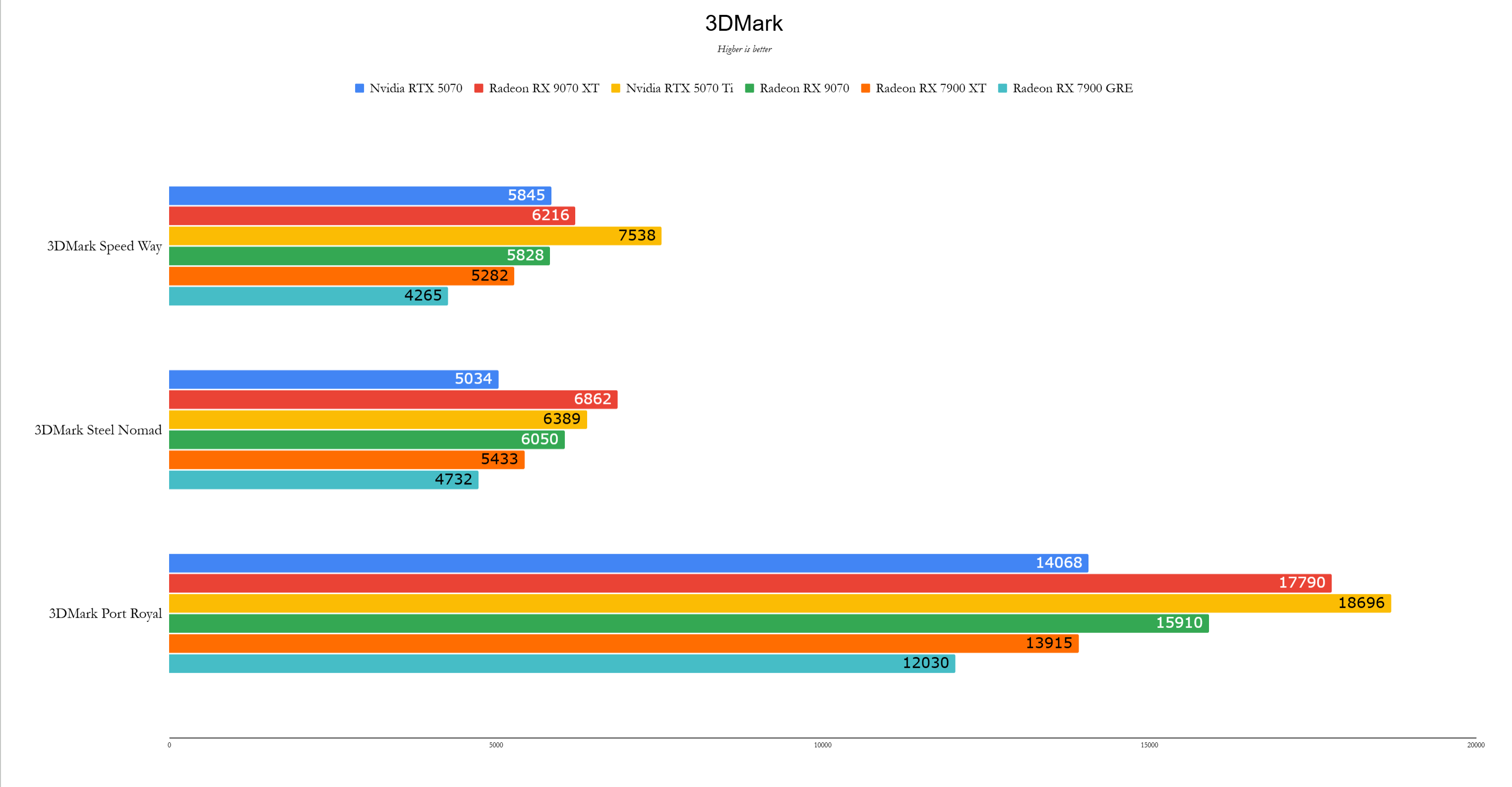
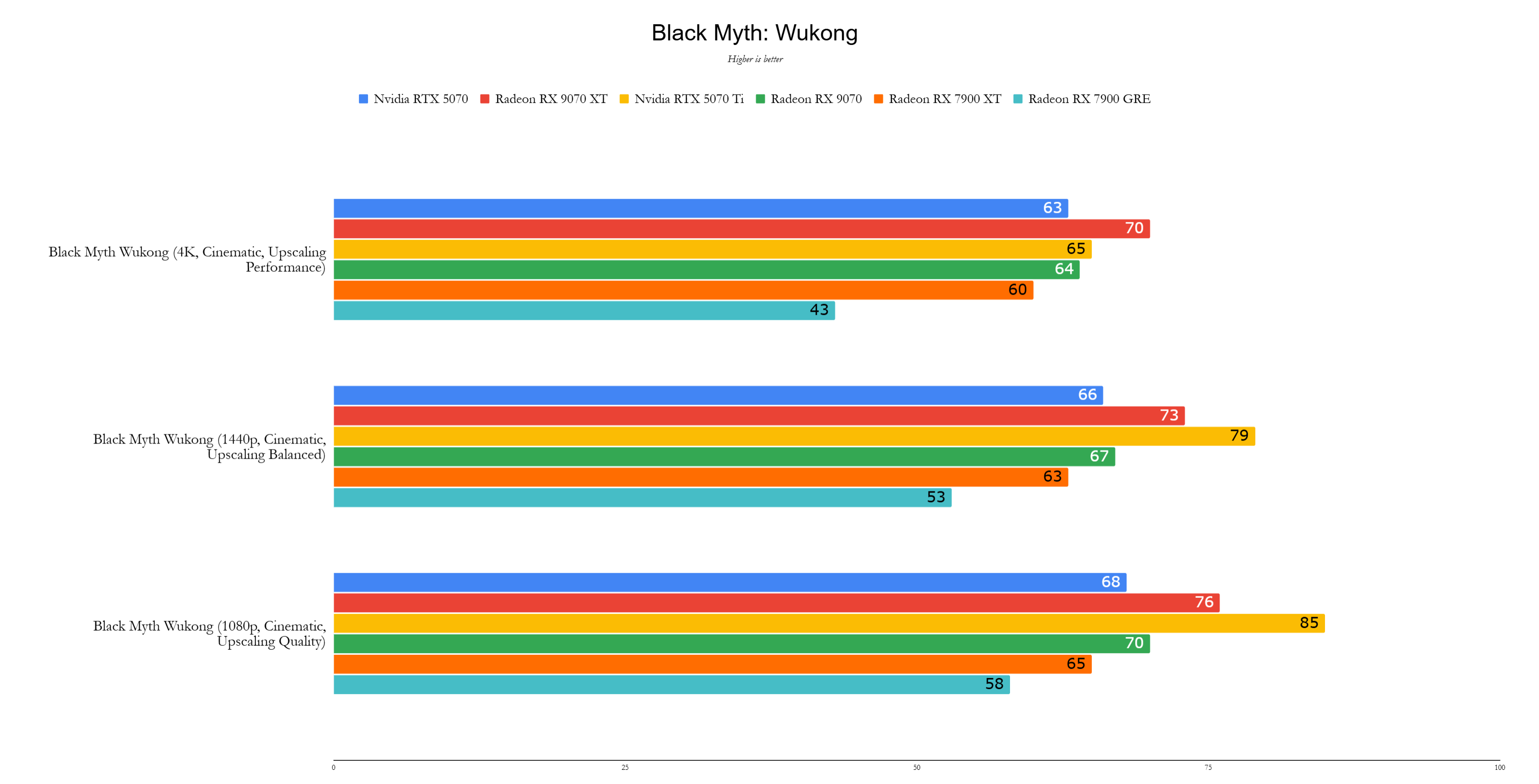 11 Images
11 Images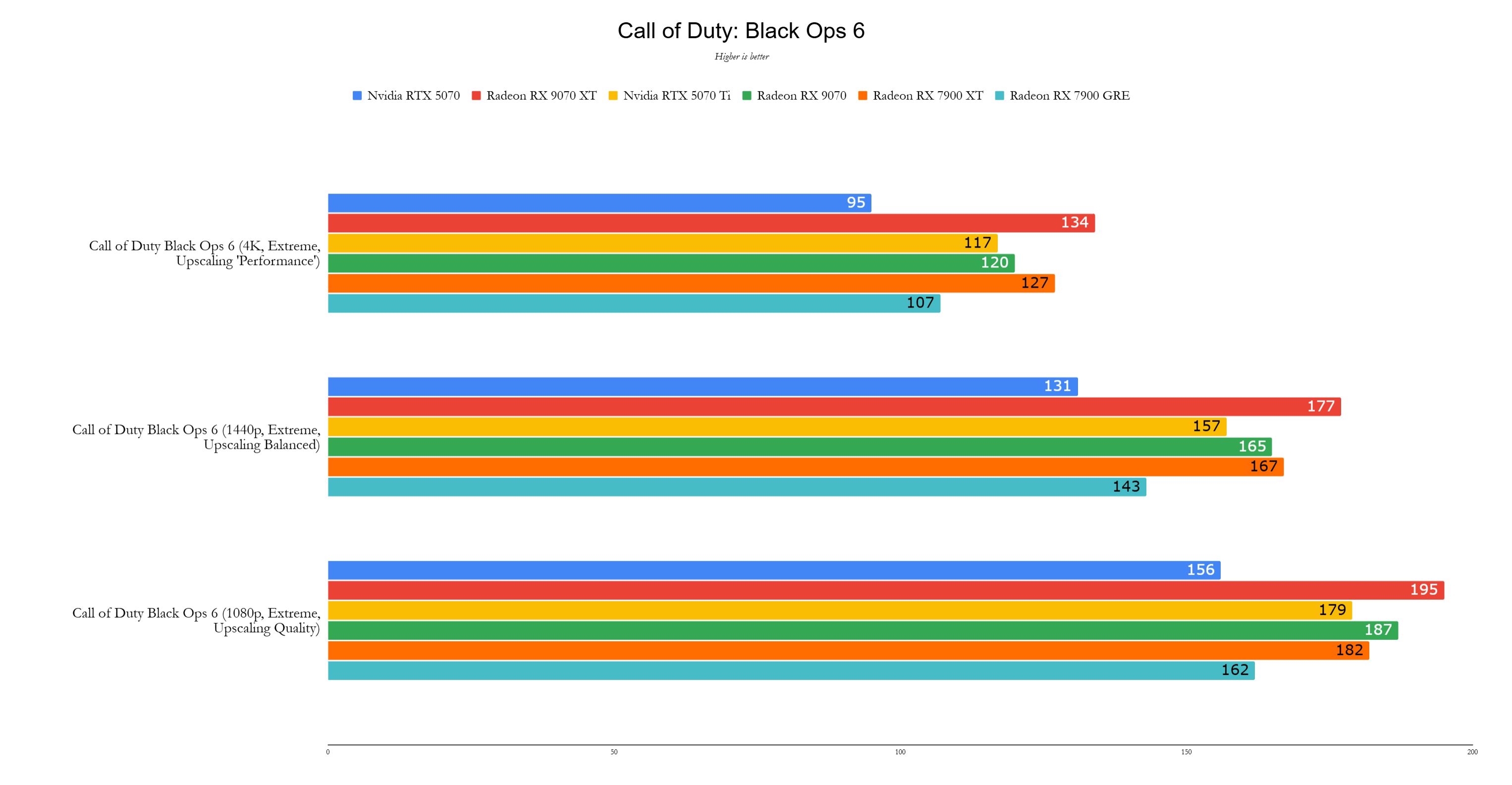
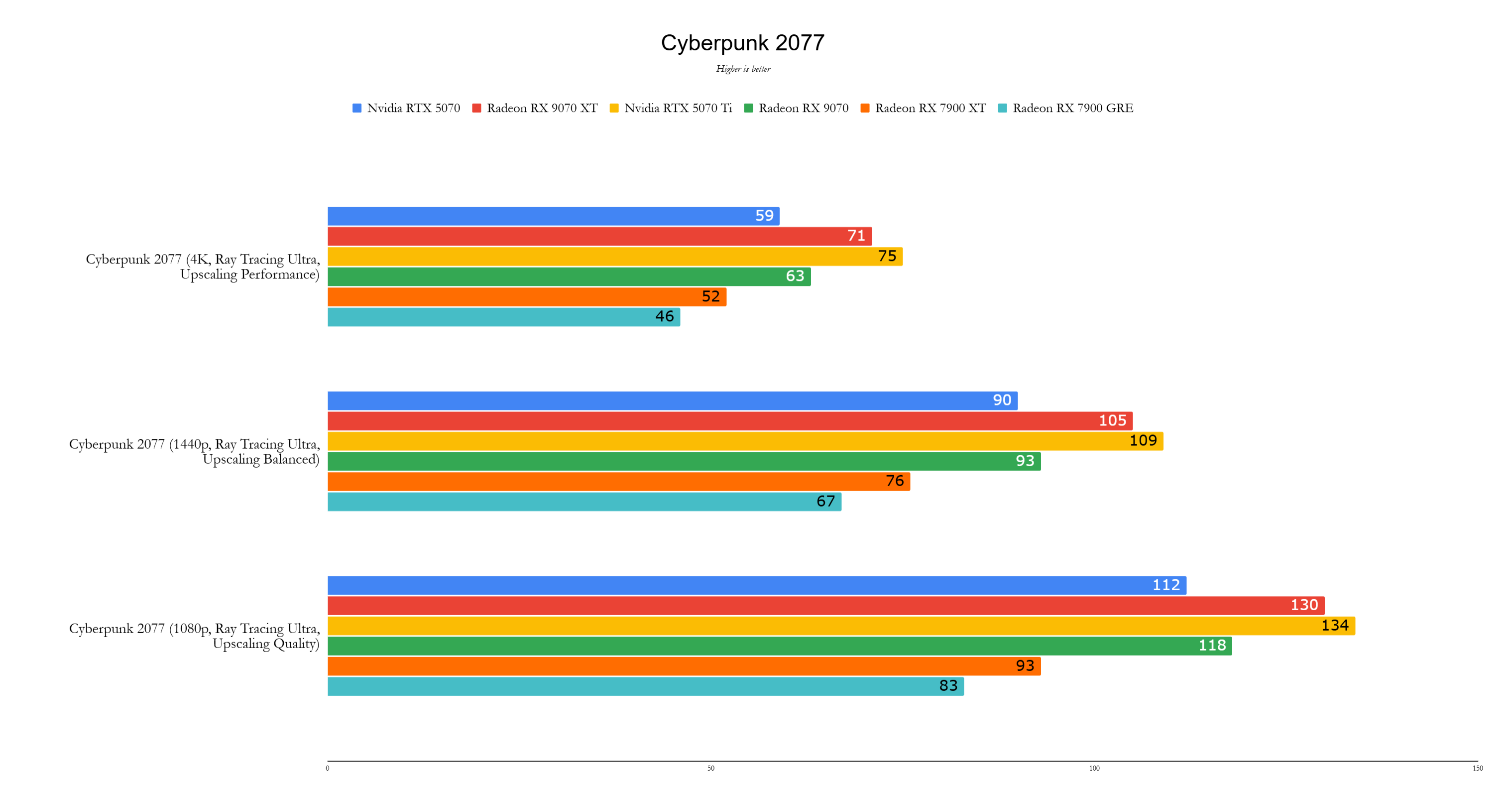
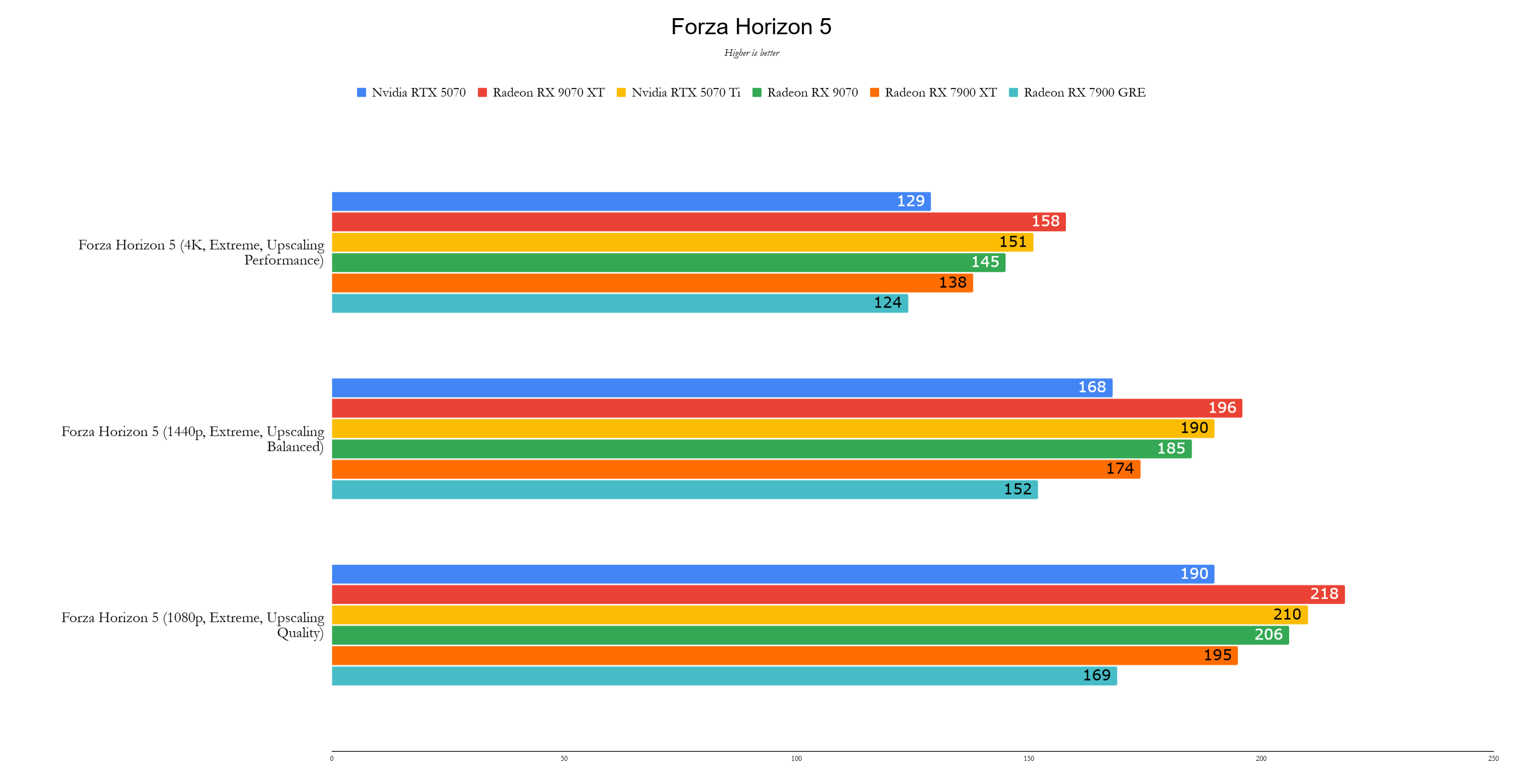
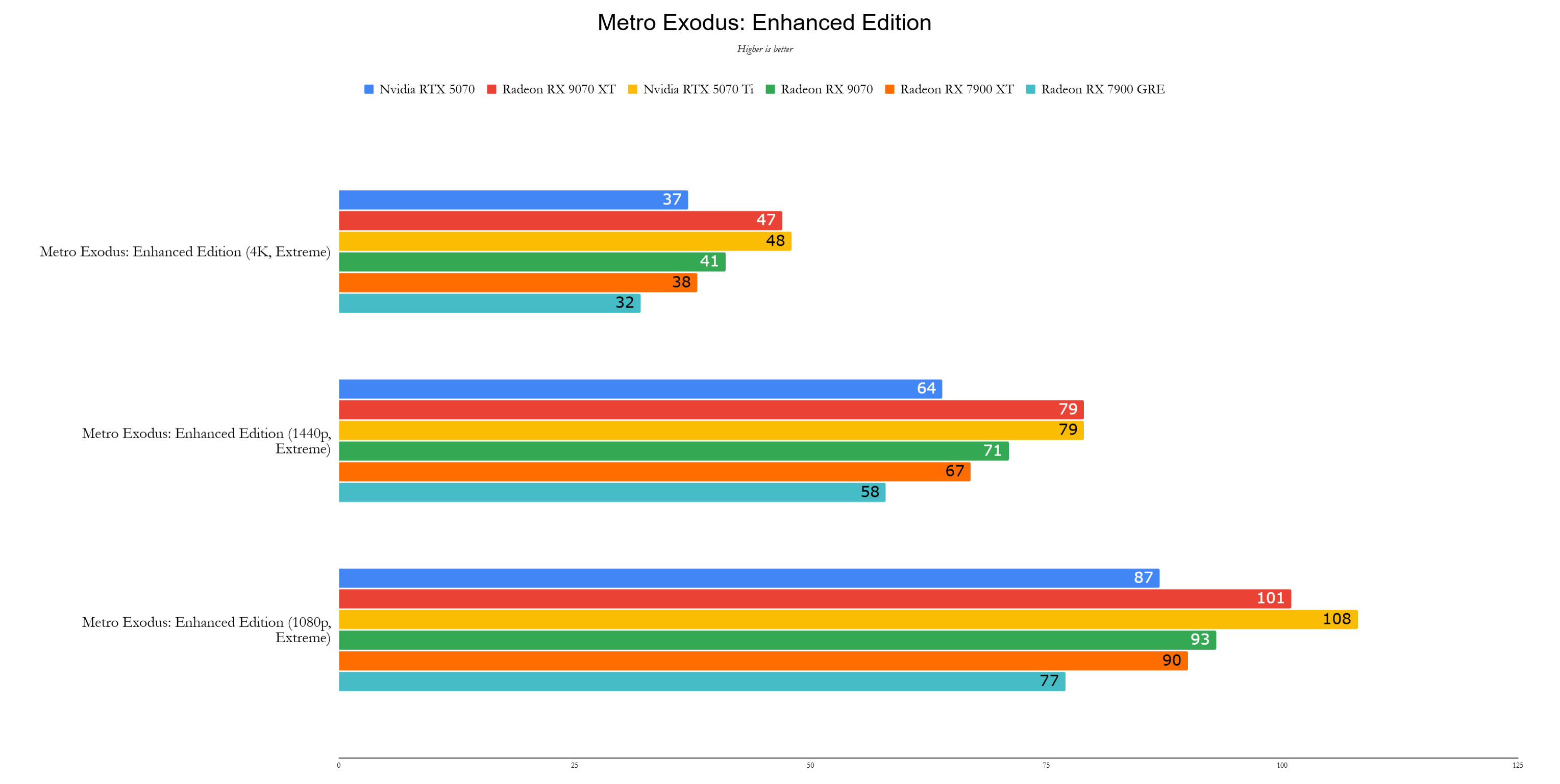
Performance
-----------The Radeon RX 9070 XT, priced at $599, outperforms the Nvidia GeForce RTX 5070 Ti, which costs $749, by an average of 2%. Despite some games favoring the RTX 5070 Ti, the RX 9070 XT's competitive performance at a lower price is a significant achievement for AMD.
Across the test suite, the RX 9070 XT was 17% faster than the RX 7900 XT, which launched at $899 two years ago, and 2% faster than the RTX 5070 Ti. Its prowess at 4K, even with ray tracing enabled, makes it an excellent entry-level 4K graphics card.
All tests were conducted with the latest drivers available. Nvidia cards used Game Ready Driver 572.60, except for the RTX 5070, which was on review drivers. AMD cards were tested on Adrenalin 24.12.1, except for the RX 9070 XT and RX 9070, which used pre-release drivers.
In 3DMark benchmarks, the RX 9070 XT outperformed the RX 7900 XT by 18% in Speed Way, though it lagged 18% behind the RTX 5070 Ti. In Steel Nomad, the performance gap widened to a 26% increase over the RX 7900 XT, and the RX 9070 XT even surpassed the RTX 5070 Ti by 7%.
Test System:
CPU: AMD Ryzen 7 9800X3D Motherboard: Asus ROG Crosshair X870E Hero RAM: 32GB G.Skill Trident Z5 Neo @ 6,000MHz SSD: 4TB Samsung 990 Pro CPU Cooler: Asus ROG Ryujin III 360In Call of Duty: Black Ops 6, the RX 9070 XT led the RTX 5070 Ti by 15%, while in Cyberpunk 2077, the RTX 5070 Ti had a slight 5% advantage. In Metro Exodus, the RX 9070 XT matched the RTX 5070 Ti's performance, significantly outperforming the RX 7900 XT. Red Dead Redemption 2 showcased the RX 9070 XT's Vulkan performance, achieving 125 fps compared to the RTX 5070 Ti's 110 fps.
However, in Total War: Warhammer 3, the RX 9070 XT fell 13% behind the RTX 5070 Ti. In Assassin's Creed Mirage, the RX 9070 XT regained its lead, outperforming the RTX 5070 Ti by 12%. In Black Myth Wukong, the RX 9070 XT achieved a surprising 8% lead over the RTX 5070 Ti, demonstrating significant improvements in ray tracing performance. Forza Horizon 5 saw the RX 9070 XT slightly ahead of the RTX 5070 Ti by 5%.
Announced quietly at CES 2025, the Radeon RX 9070 XT feels like AMD's strategic move against Nvidia's Blackwell graphics cards. At $599, it represents a return to more reasonable pricing in the graphics card market. While not as fast as the RTX 5080 or RTX 5090, the RX 9070 XT offers a compelling flagship option for gamers, reminiscent of the value and performance of the GTX 1080 Ti from 2017.
Related Articles
Latest Articles












![Roblox Forsaken Characters Tier List [UPDATED] (2025)](https://images.dyk8.com/uploads/18/17380116246797f3e8a8a39.jpg)
